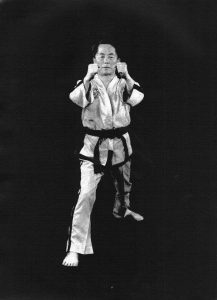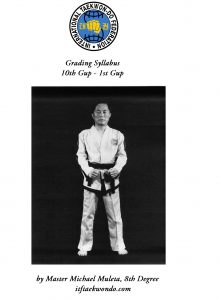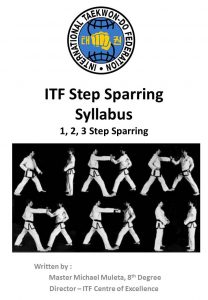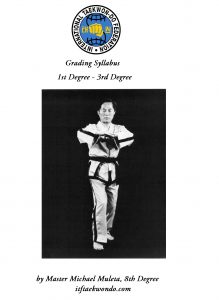Composition of Taekwon-Do
The composition of Taekwon-Do is comprised of fundamental movements, patterns, dallyon, sparring and self-defence techniques that are so closely related that it is impossible to segregate one phase of instruction from another.
Fundamental movements are necessary for sparring and patterns, while bothpatterns and sparring are indispensable for perfection of fundamental movements.
It is difficult to distinguish the beginning of the cycle from the end. There is, in fact, like the Deity, no beginning or end. A student will find that he will have to return time and time again to the beginning fundamental movements to perfect his advanced sparring and self-defence techniques.
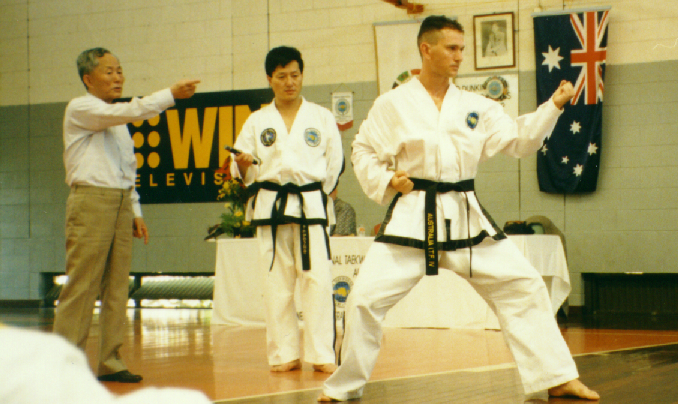
Each fundamental movement, in most cases, represents and attack or defence against a particular target area or definite action of an imaginary opponent or opponents.
It is necessary to learn as many fundamental movements as possible and fit them into complete proficiency so the student can meet any situation in actual combat with confidence.
The pattern actually places the student in a hypothetical situation where he must avail himself to defence, counterattack, and attact motions, against several opponents. Through constant practice of these patterns, the attack and defence become a conditioned reflex movement.
Power and speed must be developed to such a high degree that only one single blow is needed to stop an opponent, so the student can shift stance and block or attack another opponent. Each pattern is different from the other in order to develop reaction against changing circumstances.
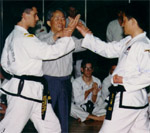
Once the basic patterns are mastered, the student then begins to physically apply the skill obtained from fundamental patterns and movements to sparring against actual moving opponents.
Collaterally with sparring, the student must begin to develop his body and toughen his attacking and blocking tools so he is able to deliver maximum damage in actual combat.
Once a student has applied himself to fundamental movements, patterns, sparring and dallyon, then the time has arrived for the student to test his coordination, speed, balance, and concentration against spontaneous attacks: ie. self-defence.
The student will constantly find himself returning, however, to his fundamentals even when he has achieved the highest possible degree of self-defence techniques.
From the works of General Choi Hong Hi, Founder of Taekwon-Do
In addition to links on the resources pages, you may also like to consider our series of Ebooks in our Online Store.
Our ebooks come with detailed instructional information, step by step descriptions and video link to all sequences.
Website sponsored by – Global Fitness Institute


